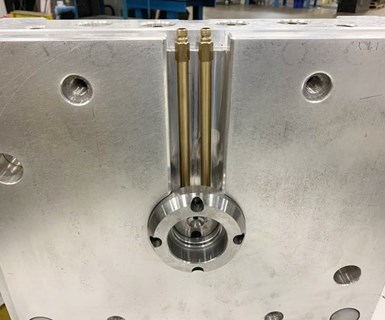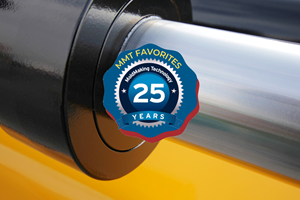Popular Posts: February 2020
Catch up on these five most popular blog posts from February 2020.
It’s the end of the month, so that means it’s time to look back and reflect on the five most popular blog posts from February. These are the most viewed articles that readers like you have read and enjoyed, so don’t miss out on what everyone else is reading. Take a look and learn some more about what’s going on in the moldmaking community.
Revisiting Some Hot Runner Fundamentals

Very intelligent and experienced people in the plastics industry frequently ask for hot runner basics because although they know that a hot runner is a critical component in the injection molding process, some don’t understand what it does or how it works. Remember those plastic model kits you put together as a kid? The excess plastic that held those tiny components for the model in place is called a cold runner, and it is essentially scrapped plastic. Cold runners created during industrial production are very much like those models but on a much larger scale. When you consider the cost of resin, cold runners can be an expensive prospect because of the unwanted scrap plastic they produce.
Read the complete article here.
How to Correctly Size a Hydraulic Cylinder
In order to correctly size a hydraulic cylinder on a mold, follow these steps.
- Train the mold designer to understand the potential maximum plastics pressures, so he/she can accurately calculate the plastics pressures that the cavity surface area will have on the component. Many will look only at pack/hold pressures, when peak plastics pressures must be considered. Also, do not solely base it off the material being used, as there are factors that can drastically impact pressures. If you are unsure then round it up. Note, if you want a robust tool and process then do not ever round it down. Once you have determined the maximum plastics pressures, the rest is easy.
- Accurately calculate the cavity surface that is on the surface area of the component. Then multiply that number by the maximum plastics pressure we discussed. The result will be the required pressure for designing your cylinder.
Read the complete article here.
Related Content
Considerations for Mold Base Material Selection
Choosing the right material can greatly affect the profitability and cost of your application.
Read MoreHow to Correctly Size a Hydraulic Cylinder
This week Randy shares steps for correctly sizing a hydraulic cylinder on a mold.
Read MoreWhat You Should Consider When Purchasing Modified P20 Steel
When buying P20 steels that have been modified, moldmakers must be aware of the variations and key issues that affect delivery, cost and lead times.
Read MoreThe Benefits of Hand Scraping
Accuracy and flatness are two benefits of hand scraping that help improve machine loop stiffness, workpiece surface finish and component geometry.
Read MoreRead Next
How to Use Continuing Education to Remain Competitive in Moldmaking
Continued training helps moldmakers make tooling decisions and properly use the latest cutting tool to efficiently machine high-quality molds.
Read MoreReasons to Use Fiber Lasers for Mold Cleaning
Fiber lasers offer a simplicity, speed, control and portability, minimizing mold cleaning risks.
Read MoreHow to Use Strategic Planning Tools, Data to Manage the Human Side of Business
Q&A with Marion Wells, MMT EAB member and founder of Human Asset Management.
Read More




























